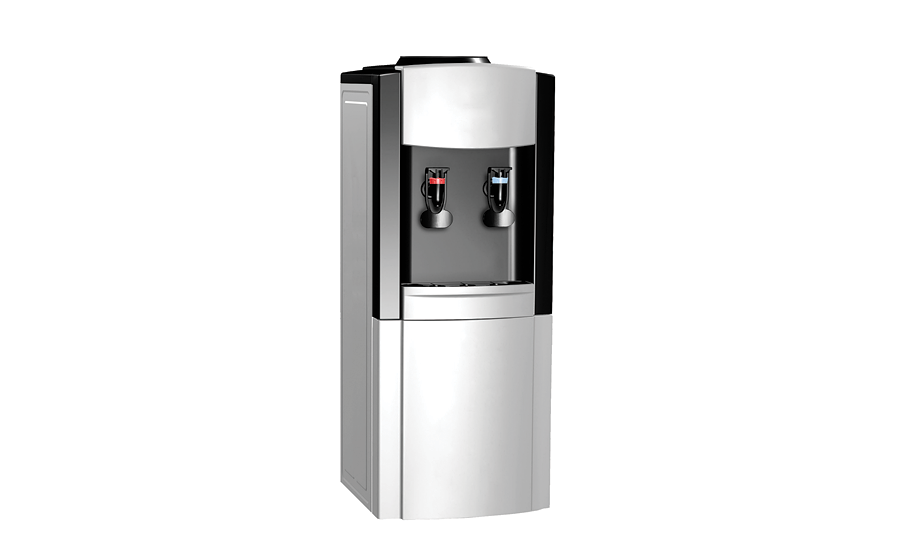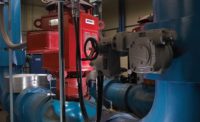If you are not familiar with the acronym GWP, get used to it. It means “global warming potential.” The push within the refrigerant side of our profession is low global warming potential or low GWP refrigerants.
Another term you will start to hear a lot more is “natural refrigerants.” A natural refrigerant is a chemical that is common in the atmosphere, such as ammonia, carbon dioxide, propane and water. All these are considered natural refrigerants.
The change in refrigerants can be traced back to the Montreal protocol. The concept was not to stay stagnant by banning certain refrigerants, but to evolve into newer refrigerants the do not damage the ozone layer or impact global warming or climate change. Every new refrigerant is analyzed for potential damage to the environment.
While most of us think about refrigerants used for air conditioning, we also use refrigerants in many other applications. One example is a water cooler. At the present time, most water coolers use a R134a refrigerant. This also is a common refrigerant used in automobile air conditioners.
ASHRAE classifies R134a as a Group A1 refrigerant, meaning it is a lower-toxic, lower-flammable refrigerant. You also may hear these refrigerants referred to as nontoxic, nonflammable. That is a misnomer since they are toxic at certain levels and they will burn, however, very poorly.
R134a is an HFC or hydrofluorocarbon refrigerant. This refrigerant, and similar HFCs, were developed to replace CFCs or chlorofluorocarbons. CFCs are known to deplete the ozone layer. While R134a does not deplete the ozone layer, it is a higher global warming potential refrigerant.
The two common refrigerants being suggested to replace R134a are either R1234yf or R290. R1234yf is an HFO or hydrofluoro-oelfin refrigerant. R290 is a fancy name for propane. However, R290 is a refrigerant-grade propane and not the standard propane you hook up to your outside grill.
Problems arise
A problem arises for both these refrigerants in that they are not Group A1 refrigerants. R1234yf is a Group A2L refrigerant, whereas R290 is a Group A3 refrigerant. Currently, the codes are very restrictive regarding the use of Group A2 and A3 refrigerants.
Group A2 are lower flammable refrigerants. Group A3 are higher flammable refrigerants, such as propane. The newer categories are Group A2L and B2L and these are refrigerants that are mildly flammable. In other words, on the low end of Group A2. Because 2L is a newer category, neither the ICC nor IAPMO codes currently address this category. Both code organizations still consider Group A2L to be Group A2 and Group B2L to be Group B2.
At the current time, the standards that regulate products such as water coolers are very restrictive on the use of Group A3 refrigerants, propane and similar refrigerants. They are less restrictive with the use of Group A2L refrigerants.
You will find R290 is gaining access in products such as household refrigerators and commercial cooler boxes. Some of these are being installed in supermarkets across the country.
There isn’t a major concern with refrigerators and cooler boxes since the amount of refrigerant used is minimal. If there is a leak in such a large space, the refrigerant quickly will drop below the lower flammable or explosive limit (LFL or LEL). Once a refrigerant is diluted below the lower flammable limit, it poses no hazard to the building or its occupants.
For air conditioning of buildings, the most common CFC replacement refrigerant is R410A, which is a Group A1 HFC refrigerant. In the next few years, R410A is anticipated to be removed from the marketplace for new air-conditioning units. It still will be available for existing systems.
The most common refrigerants currently being mentioned for replacing R410A are R32, R1234yf and R1234ze. All three refrigerants fall into the category of Group A2L refrigerants. These refrigerants also are all low GWP refrigerants. Hence, they are safer for the environment.
While these currently are the most common three replacement refrigerants, realize the refrigerant manufacturers continue to develop additional replacement refrigerants. There already are a number of blended refrigerants listed for use as low GWP.
Get clearance
Before a new refrigerant can be used in the U.S. it must first be approved by the Environmental Protection Agency. The EPA Significant New Alternatives Policy (SNAP) program evaluates and approves all new refrigerants. The EPA has its hands full with evaluating all the new refrigerants entering the market.
Because these new refrigerants are A2L refrigerants, there is and will be a concern for the potential fire hazard when the refrigerant leaks. The easiest way of addressing the fire hazard is to immediately dilute the refrigerant below the lower flammable limit. Most refrigerants are heavier than air and will tend to sink in the atmosphere.
In order to meet the dilution requirements, engineers are going to have to analyze the size of the room, the location of the potential refrigerant leak and the air movement within the room. This is unlike our current design practice where we simply do not care. Whenever a refrigerant is used, we assume it is not going to be toxic or cause a fire hazard. With the newer replacement refrigerants, we will have to consider the fire potential.
Both ICC and IAPMO currently are evaluating changes to their respective codes to address A2L refrigerants. Likewise, Underwriters Laboratories is changing its standards to regulate appliances using Group A2L, A2 and A3 refrigerants.
It is anticipated the ICC International Fire Code and International Mechanical Code will contain requirements for A2L refrigerants in the 2018 edition. IAPMO currently has an A2L Task Group developing requirements for A2L refrigerants in the 2018 edition of the Uniform Mechanical Code. IAPMO has a head start in developing more thorough requirements for A2L refrigerants because of the timing of its code-change cycle. The refrigerant requirements in these codes also apply to plumbing products using refrigerants.
The engineering profession will have to adjust to using the new refrigerants. Evaluation of room size and air movement will become a standard practice whenever any product with a refrigerant is installed inside a building.
Keep your eyes open for changes that will be occurring to the codes and standards regarding new low global warming refrigerants.
This article was originally titled “Thinking about the atmosphere” in the September 2016 print edition of PM Engineer.




